The tithe map of this area, made in 1838, records that this was occupied by Samuel Chapman and an inn described as The Three Horse Shoes and Crown, later known as the Trent Bridge Inn. It was ‘a country inn’, providing overnight accommodation for travellers on their way into Nottingham from the south. The original inn was smaller and was demolished, after the new inn was completed in 1890.
A plaque documenting the history of The Trent Bridge Inn.
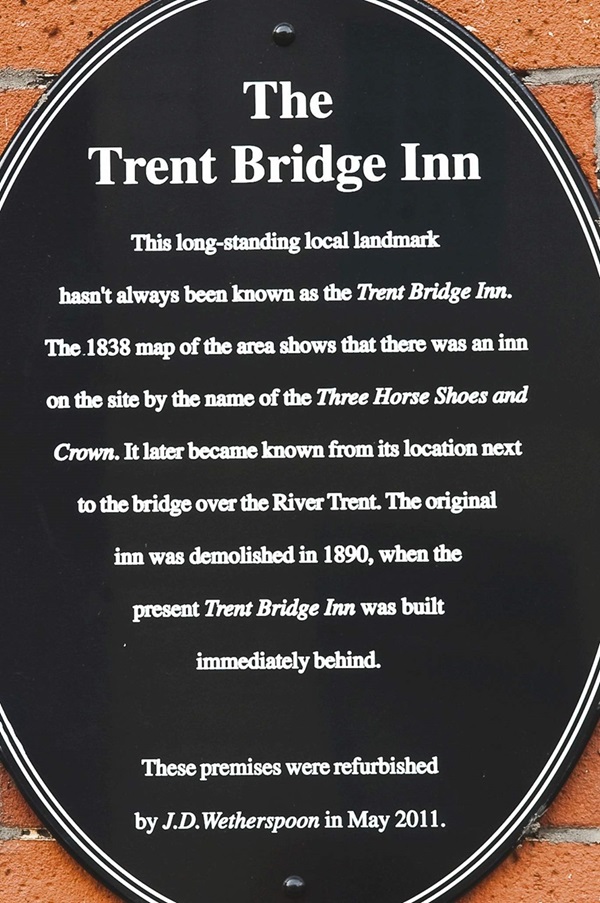
The plaque reads: This long-standing local landmark hadn’t always been known as the Trent Bridge Inn. The 1838 map of the area shows that there was an inn on the site by the name of the Three Horse Shoes and Crown. It later became known from its location next to the bridge over the River Trent. The original inn was demolished in 1890, when the present Trent Bridge was built immediately behind.
These premises were refurbished by J D Wetherspoon in May 2011.
A photograph and text about Trent Bridge Cricket Ground.

The text reads: Trent Bridge is the world-famous home of Nottingham County Cricket Club. It has staged country cricket since 1838 and is the world’s third eldest test ground.
The first Test Match held here was in early June 1899, when England drew a three day game against Australia. The ground was subsequently chosen to host the first match in the first ever five-match Test series in England. It was the last Test Match played by the legendary cricketer W G Grace, who was approaching his 31st birthday, and the first played by Wilfred Rhodes.
The ground has seen many changed since the Pavilion was built in 1886, The Fox Road and Radcliffe Road sides of the ground have been developed in recent years and the New William Clarke Stand was opened in 2010.
Photographs of Trent Bridge Cricket Ground.
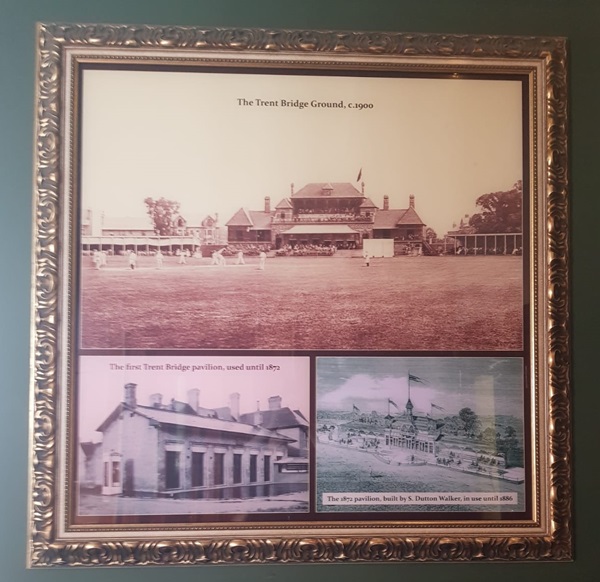
Top: The Trent Bridge Ground, c1900
Left: The first Trent Bridge pavilion, used until 1872
Right: The 1872 pavilion, built by S Dutton Walker, in use until 1886.
An illustration of George Parr, 1826-91.
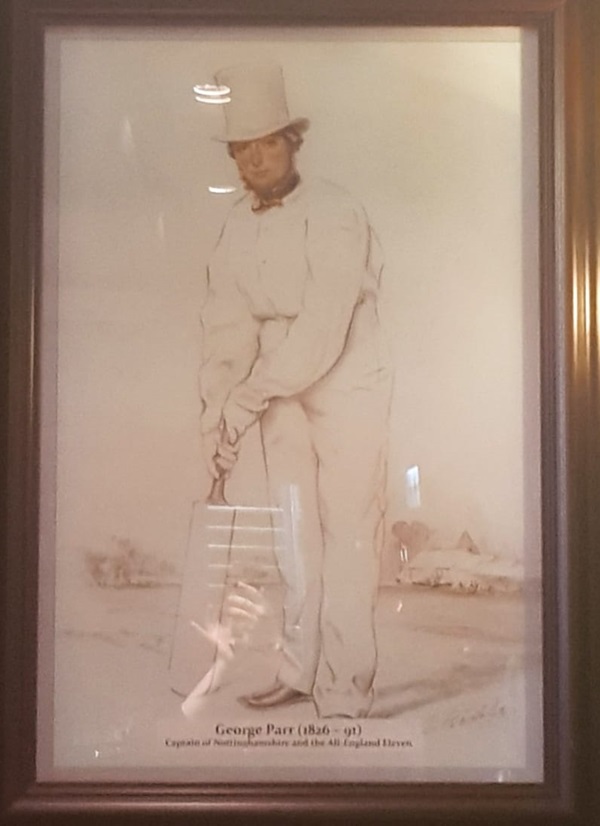
A photograph of the Old and New Trent Bridge Inns, before the original was demolished, c1888.
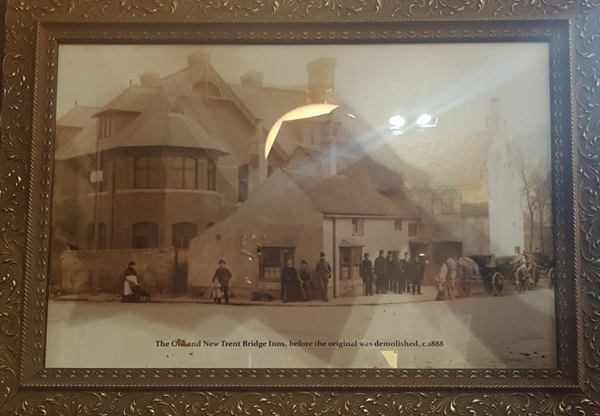
A photograph of the England Women’s Cricket team, taking the field at Trent Bridge, c1910.
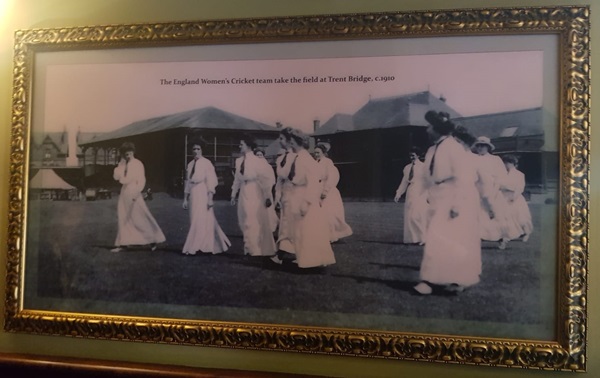
Photographs and text about George Parr.
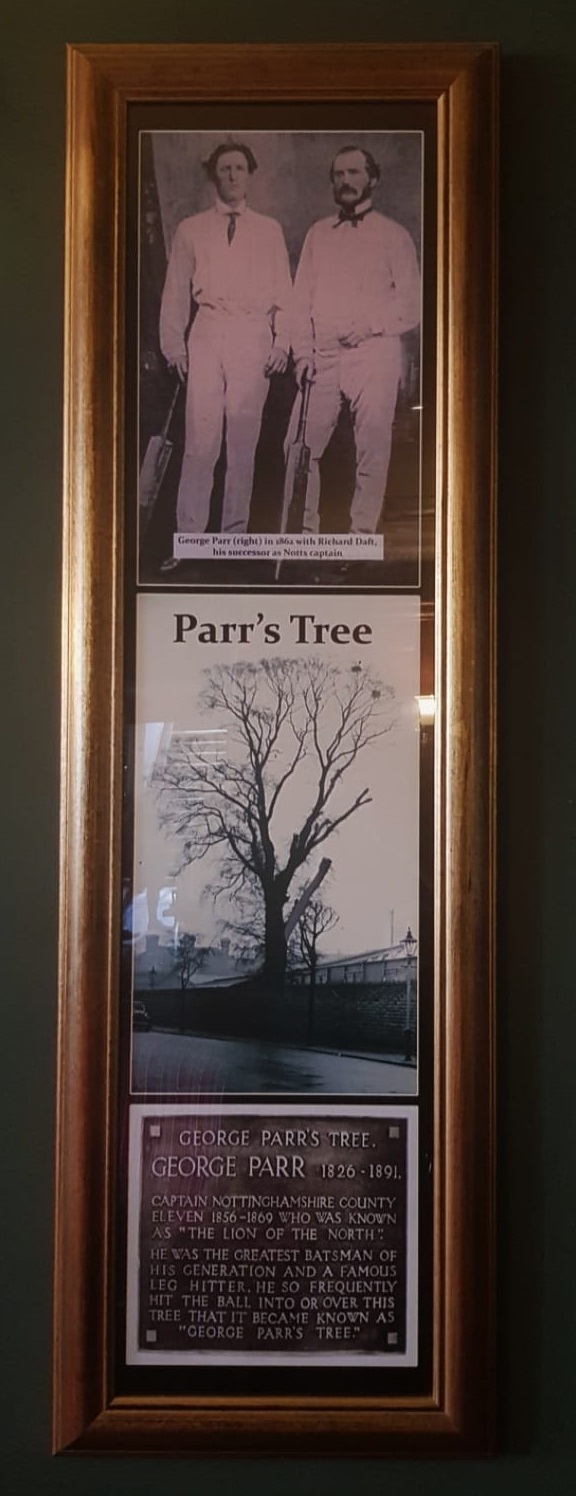
The text reads: Captain Nottinghamshire County Eleven 1856-69 who was known as ‘The Lion of the North’. He was the greatest batsman of his generation and a famous leg hitter, he so frequently hit the ball into or over this tree that it became known as ‘George Parr’s Tree’.
Photographs and text about Notts County FC.
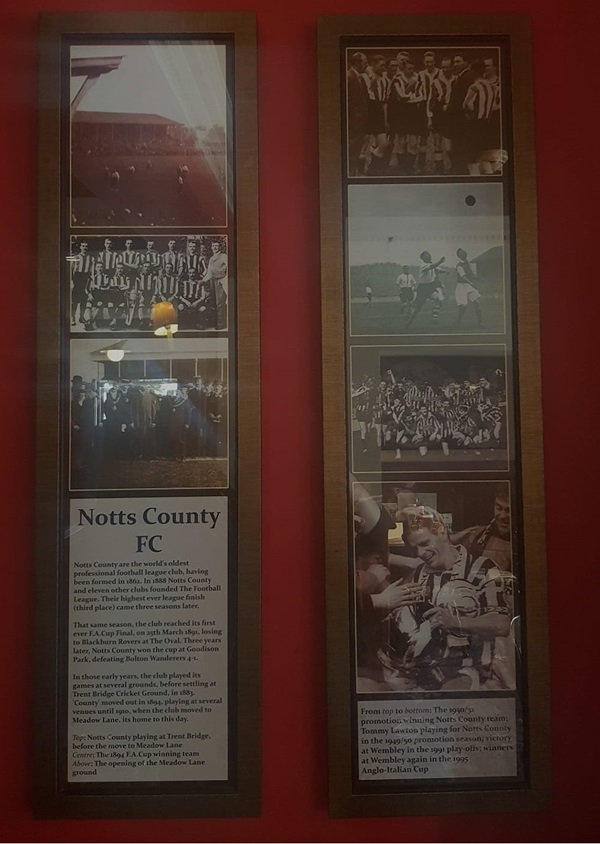
The text reads: Notts County are the world’s oldest professional football league club, having been formed in 1862. In 1888 Notts County and eleven other clubs founded The Football League. Their highest ever league finish (third place) came three seasons later.
That same season, the club reached its first ever FA Cup Final, on 25th March 1891, losing to Blackburn Rovers at The Oval. Three years later, Notts County won the cup at Goodison Park, defeating Bolton Wanderers 4-1.
In those early years, the club played its games at several grounds, before settling at Trent Bridge Cricket Ground, in 1883. ‘County’ moved out in 1894, playing at several venues until 1910, when the club moved to Meadow Lane, its home to this day.
Top: Notts County playing at Trent Bridge before the move to Meadow Lane.
Centre: The 1894 FA Cup winning team
Above: The opening of the Meadow Lane ground.
External photograph of the building – main entrance.
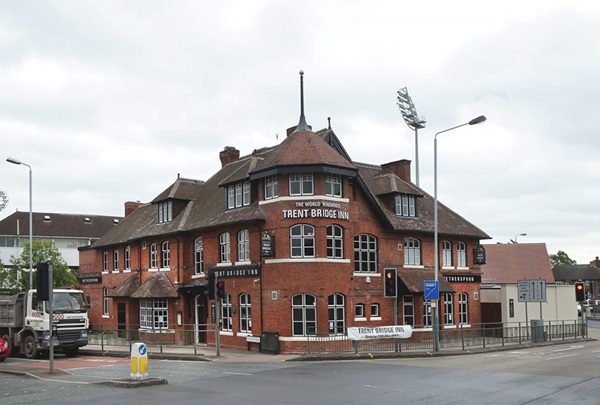
If you have information on the history of this pub, then we’d like you to share it with us. Please e-mail all information to: pubhistories@jdwetherspoon.co.uk